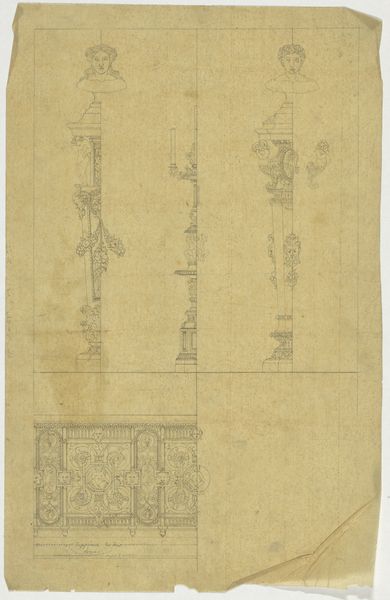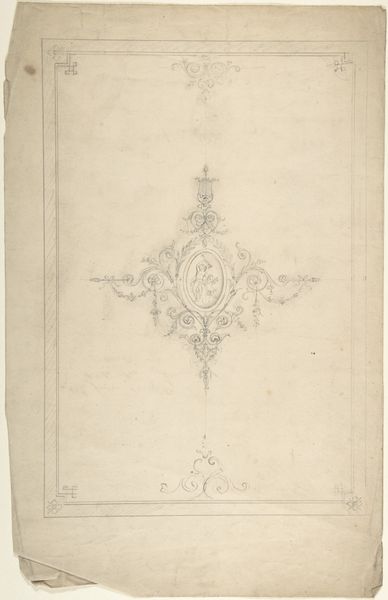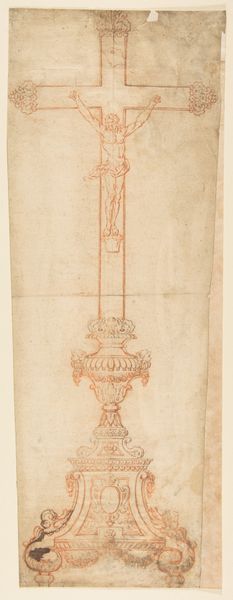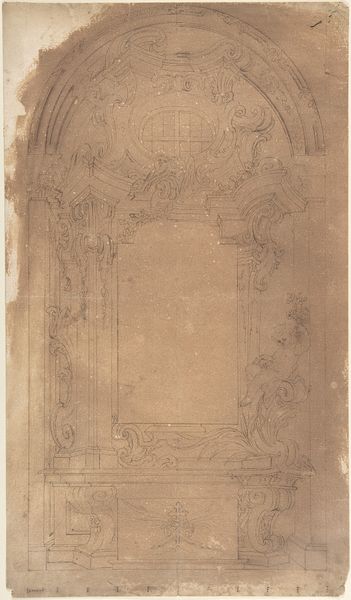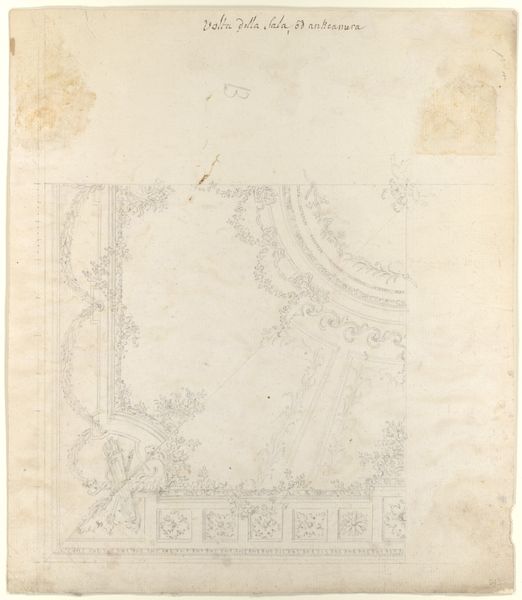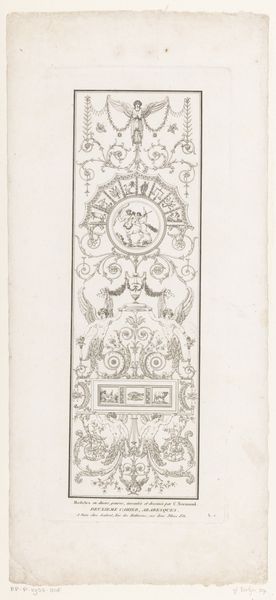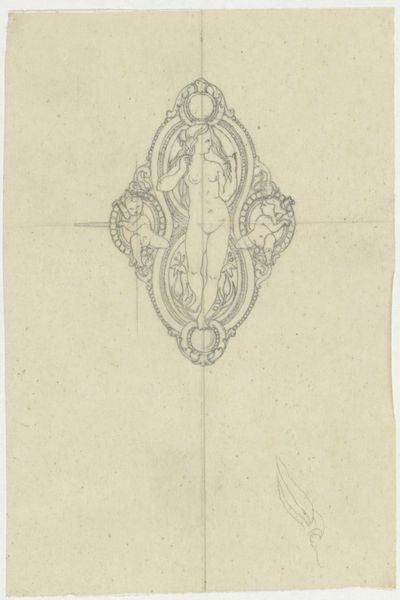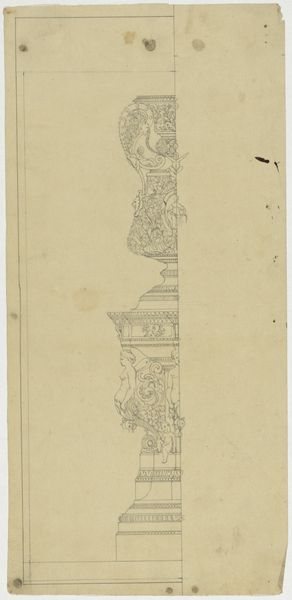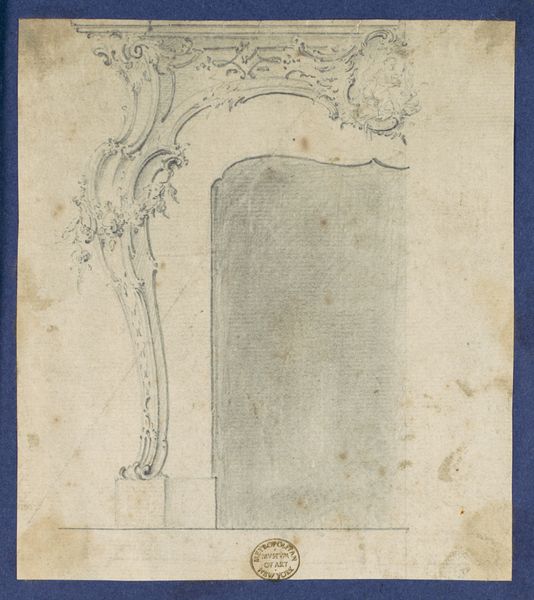
Design for a Pier-glass for Adderbury House, Oxfordshire, for the Duke of Buccleuch 1763 - 1773
0:00
0:00
drawing, print, architecture
#
drawing
#
neoclacissism
# print
#
geometric
#
architecture
Dimensions: sheet: 18 1/2 x 9 1/2 in. (47 x 24.1 cm)
Copyright: Public Domain
Editor: So, here we have William Chambers' "Design for a Pier-glass for Adderbury House, Oxfordshire, for the Duke of Buccleuch," created between 1763 and 1773. It’s a drawing, almost architectural in its precision. The delicate linework, those repeated geometric patterns… It feels so meticulously planned. What strikes you most about this design? Curator: For me, the interesting aspect lies in considering this work not just as a design, but as a tangible product of labor within a specific social hierarchy. We see the Duke of Buccleuch commissioning Chambers, deploying human capital for the realization of domestic display. The materials implied – glass, wood, possibly even precious metals – speak to consumption and status. Editor: That's a compelling way to frame it. So, you see beyond just the aesthetics and consider the economic factors involved in its creation? Curator: Exactly. The craftsmanship evident, the translation of design into physical form - consider the artisans involved, the workshops engaged, and the sheer amount of skilled labor necessary to realize this object within a specific socio-economic environment. Doesn't this shift your perspective from mere aesthetic appreciation? Editor: Definitely. I was initially drawn to the symmetry and the neoclassical elements, but thinking about the labor… it grounds it in a real-world context. So, the drawing becomes a kind of blueprint of production. Curator: Precisely! The design dictates not only the visual form but also the entire production process, reflecting social divisions and the flow of resources. It speaks to power dynamics manifested through material culture. Editor: It's like seeing the unseen hands that brought it to life. Thanks! It's transformed how I'll look at architectural drawings from now on. Curator: Indeed, every artwork contains not only what it represents, but a map of how it was created, consumed, and by whom.
Comments
No comments
Be the first to comment and join the conversation on the ultimate creative platform.
